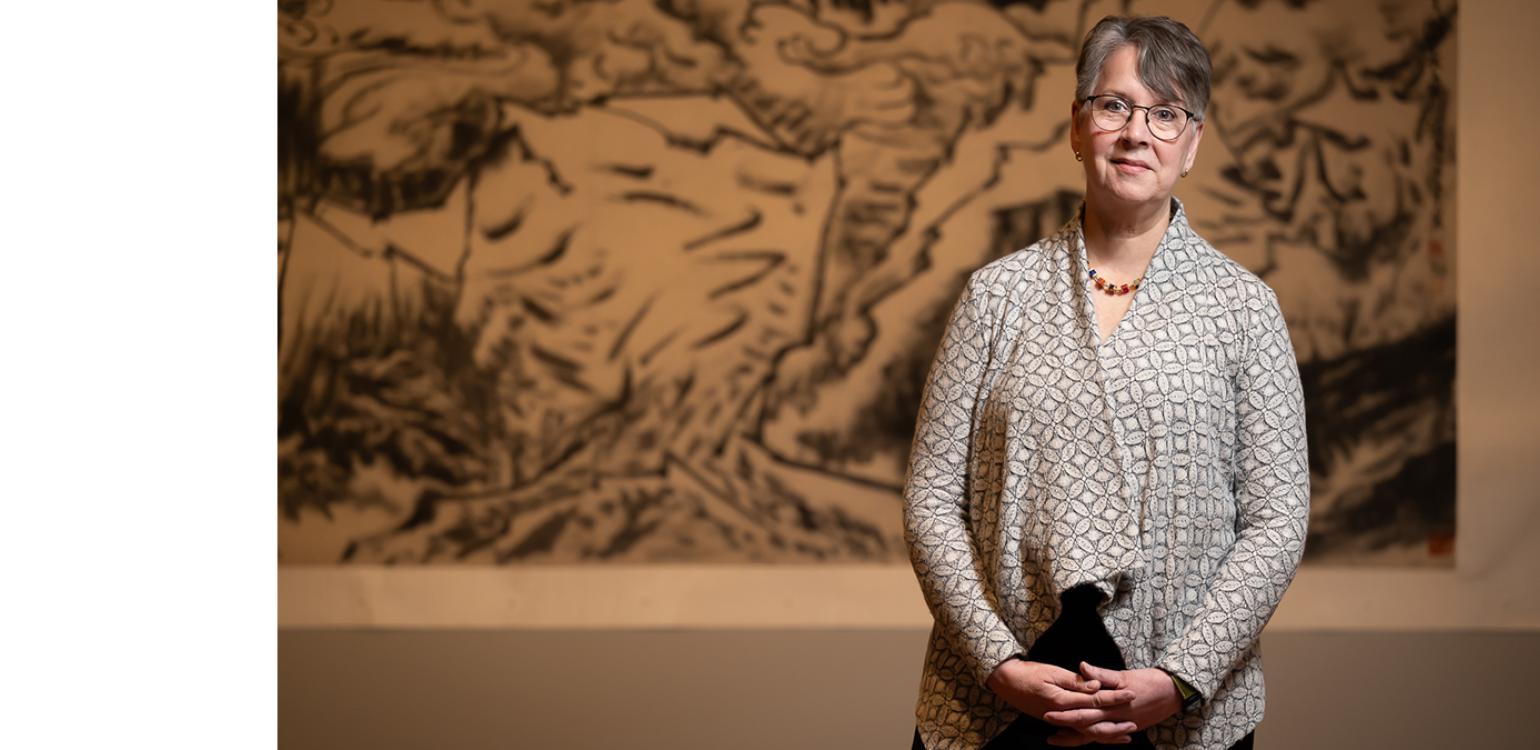
director's letter
The heart of our work at the museum is connecting people to art, ideas and each other by creating space for and cultivating inquiry and reflection. In this ever-changing world, this mission demands equal parts flexibility and fortitude as well as the ability to be forward looking in our programs and planning. How do we best understand and build the future we want to inhabit? How do we meet the needs of today while creating capacity for tomorrow?
As a teaching museum, this starts with a commitment to our students—and our responsibility to invite them to engage with the museum in ways that feel legible and welcoming. Our goal is always to make each visitor feel that they belong at SCMA and that SCMA belongs to them. I am thrilled to share all the ways in which we are working toward this end, including a transformative gift from Museum Visiting Committee members Jan Fullgraf Golann ’71 and Jane Timken ’64 that allows us to offer free admission to one and all.
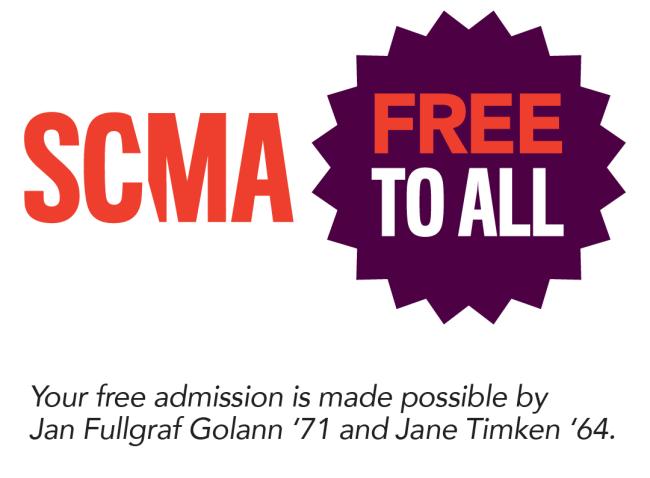
It is our reality that SCMA’s core audience of Smith students turns over every four years or so, each class bringing with them their own differentiators and desires. The current generation of students on campus, marked by the pandemic experience, has a different set of needs when it comes to nurturing well-being and social connection. The museum has been very intentional and thoughtful about how we respond to this and about establishing ourselves as a resource.
During the academic year 2022–2023, we spent time meeting with students to listen, learn and pilot some strategies. Associate Director of Learning and Interpretation Nina C. Peláez met with representatives of organizations across campus, including our Museum Advisory Collective, and with students from a range of majors and concentrations. The Museum Advisory Collective met monthly and counseled the museum on upcoming programs, projects and installations. We heard their strong interest in after-hours student programming and tested some ideas, including a partnership with Smith’s radio station WOZQ to host “Art on Air,” which invites students for an early evening visit to the museum accompanied by playlists curated by DJs from WOZQ.
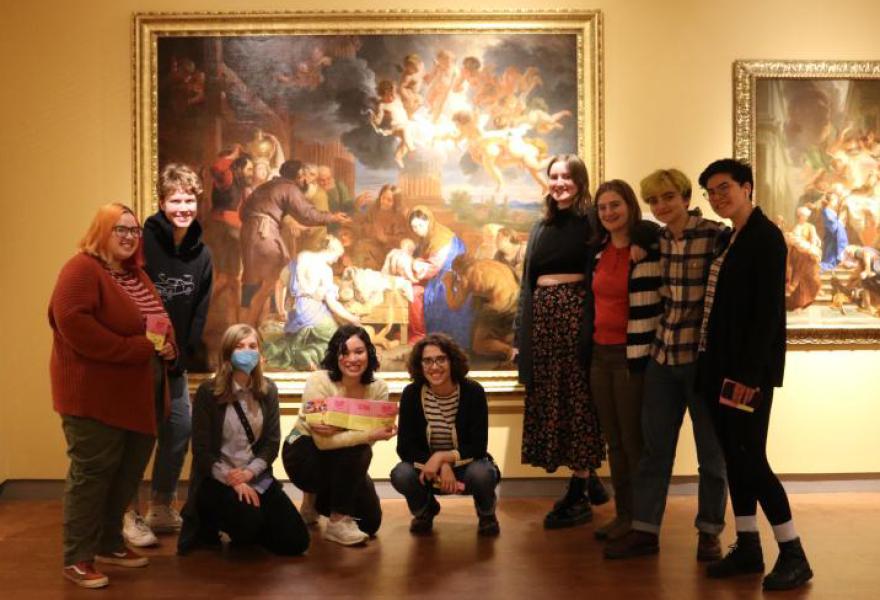
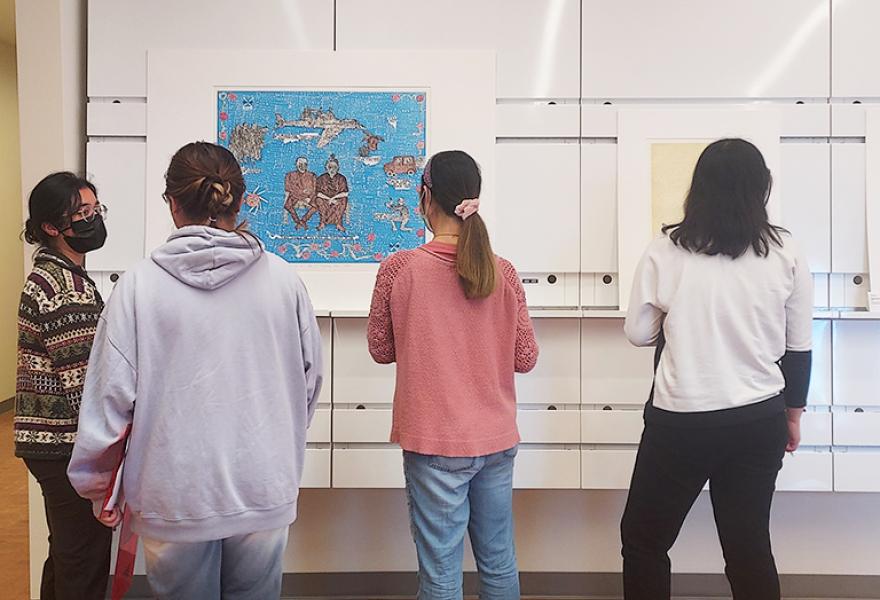
A series of conversations with Smith’s cultural organizations turned into partnerships that produced a suite of programs connecting art by Asians and Asian American artists with art-making and dialogue about Asian identities at Smith. We are excited to expand on this model of co-creation with other student affinity groups.
Another significant and fruitful form of self-reflection culminated in our recent reaccreditation from the American Alliance of Museums. This is the gold standard for museum excellence and professionalism that signifies quality and credibility and instills confidence in our institution from donors, partners, visitors, lenders and others in and outside the museum field. It was a detailed process that took place over about 18 months, involving museum and college leadership, staff, advisors and peer reviewers and compiling all our policies and practices to make sure they conform with professional standards and keep pace with the evolution of the field.
We are very proud to be among the first academic museums in the country to earn accreditation, back in the 1980s, and to have maintained our status ever since. Internally, we are always striving to meet the highest standards, and to be recognized externally in this way for our work—grounded in ethical practice, responsible care of an extraordinary collection and honoring donors’ intentions as well as the greater community—is incredibly affirming.
As a museum, we are simultaneously tasked with reflecting on our past practices while working in real time to plan for the future. This work is complex and affects all areas of operation, but it is perhaps particularly evident in the development of the collection, as we continually consider how it has grown, how it is being used and how we would like to see it evolve. The majority of the collection’s growth happens through gifts of art, and in 2016 we established The Hillyer Society to recognize those who have established a gift intention in their will. Dr. Elizabeth Force was one of the first members of the society, with a planned gift of her collection of Japanese lacquer objects that we were fortunate to research and exhibit during her lifetime. Dr. Force died in the spring of 2023, and we are ever grateful for her generous bequest and the opportunity to have worked alongside her to plan for the sustained care and study of her collection.
In keeping with our commitment to create capacity for tomorrow, we thank Anne Donovan Bodnar ’78 and Jim Bodnar for their support of our curatorial post-baccalaureate fellowship program for young professionals, which was established at the same time as the Museums Concentration (MUX). When the college launched MUX in 2009, it was with the goal of providing students from across disciplines with the chance to study the history, theory and cultural role of museums. We felt that if we were going to excite undergraduate curiosity about careers in the field, we also had an obligation to open up pathways to those careers with meaningful professional mentorship. SCMA hosted 15 post-baccalaureate fellows in our curatorial, education and communications departments between 2009 and 2020. After a hiatus during the height of the pandemic, we were pleased to welcome three new fellows until summer of 2023 with the support of the Bodnars and other museum funds dedicated to postgraduate training.
The revived post-baccalaureate program is one of many examples of how the museum has not only found its footing, post-pandemic, but is also moving forward, with a full spectrum of activity and years of work coming to fruition. In the past decade, our curatorial staff has grown and blossomed. We are seeing the benefit of this expanded team and its range of expertise represented in our exhibitions and increasingly diverse programs.
It is especially energizing to create programs that bring together different audiences for a shared experience. One took place in the fall of 2022 as part of our “Museums Today” series, which brings practitioners to Smith to engage with students. It was our great pleasure to host nico wheadon, arts consultant, advisor, curator, educator and author of Museum Metamorphosis: Cultivating Change Through Cultural Citizenship for a conversation adeptly hosted by SCMA’s Associate Director of Communications Tiffany Bradley. The discussion centered on a key idea in Museum Metamorphosis of “museum as citizen,” exploring projects that serve and partner with specific communities of color. The event took place as we welcomed our advisory Museum Visiting Committee (MVC) back to campus, and we opened it up to the public and other special guests, as well. It was a unique opportunity to illuminate transformative work happening in the cultural sector and how it is informing our own thinking as an institution.
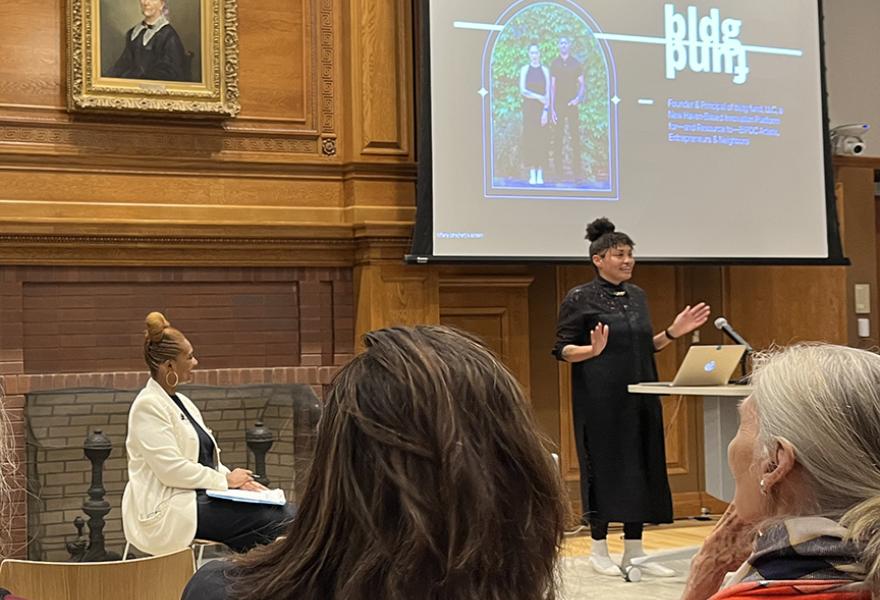
The program with wheadon in the fall was a fitting precursor to the March 2023 Miller Lecture in Art and Art History by scholar and historian Dr. Nicole R. Fleetwood, whose perceptive curatorial work with currently and formerly incarcerated artists has earned her national recognition. Where the conversation with wheadon was about emerging theory and practice, Fleetwood gave us a powerful example of elevating new and untold stories through exhibition-making. In a first for us, this was a professionally produced hybrid program, featuring an in-person audience on campus as well as a real-time livestream. It was yet another way we assimilated our learning and adapted our practices through the pandemic by engaging with audiences literally around the world.
Also in March, we welcomed our second Artist-in-Residence, Abdessamad El Montassir, who spent six weeks connecting with our community in a variety of ways. Among them was a public conversation facilitated by Emma Chubb, SCMA’s Charlotte Feng Ford ’83 Curator of Contemporary Art, and Brooklyn Quallen ’25, a STRIDE Scholar (student research assistant) working with Emma. Abdessamad’s work interrogates buried histories of North Africa through poetry, plants, artifacts and architecture, exploring questions of memory, trauma and the environment.
March 2023 also ushered in a renovated Cunningham Center for the Study of Prints, Drawings and Photographs. The project was delayed by the museum’s closure in 2020, but this gave us an opportunity to incorporate some timely learning related to the role of technology in facilitating collection access and supporting pedagogy and practice. This lived experience and collective research greatly benefited the project, and it has been so rewarding to see things move from theoretical to fully operational in the months since the Cunningham Center reopened.
SCMA's collection of more than 24,000 works on paper is by far the largest area of our holdings, and having easy, accessible storage for it on site is essential for teaching and learning. The Cunningham Center’s Joan Rhame ’49 Collection Viewing Room makes it easy to bring art out of storage and accommodate large classes and groups, with display capabilities for even our youngest school and family visitors to engage with works up close. It is a Zoom-enabled classroom, which allows for outside engagement with participants as well as expert presenters. And our new document camera has the ability to project a high-resolution detail of a work—the quality of an engraving, for example—for shared close examination. It is all very exciting for us and for the faculty; it is remarkable to see how they have seamlessly integrated this functionality into their teaching and how it has expanded what is possible.
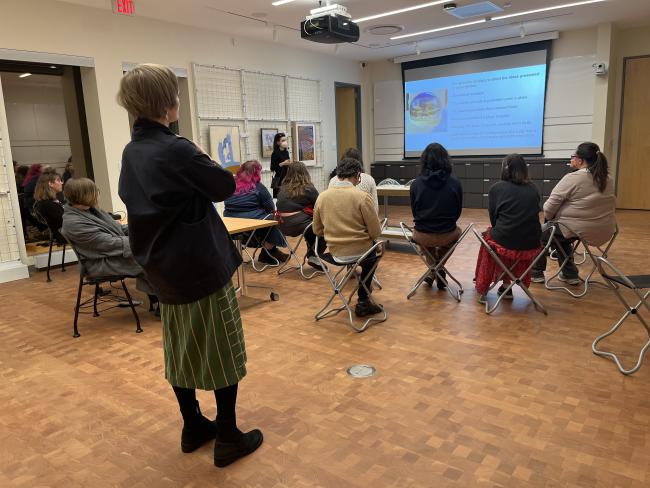
None of this would have been achieved without the heroic efforts of our collections management team in shepherding this work. This includes Assistant Registrar Amy Doyel, who was contracted to help facilitate the storage renovation project, and, in particular, Collections Manager and Registrar Deborah Diemente, who retired in February 2023 after an incredibly productive seven years. During her tenure, Deborah did amazing work building and leading a team that touches every department and is essential to our work at the museum. She brought a wealth of expertise to SCMA as well as energy and vision for what a Cunningham Center renovation could look like. She uplifted it as a priority and saw it through completion.
In keeping with Deborah’s graciousness and attention to detail, her advance notice of her retirement allowed us to welcome her successor, Robyn Haynie, during Deborah’s last few weeks with us. This valuably enabled a seamless transition in a critical area of museum operations. Robyn brings depth of experience in academic museums, serving most recently as Head of Collections at the Colorado Springs Fine Arts Center at Colorado College and previously as Assistant Director of Collections and Exhibitions at the Utah Museum of Fine Arts, affiliated with the University of Utah. We are thrilled to have her with us. We also gladly welcomed Leah Hughes to the collections staff as a full-time contracted registration and preparation assistant. Additionally, we were delighted to have Bridget Hart Martin take over as Shop Manager in January 2023, which allowed Justin Thomas to step fully into his role as Visitor Experience Manager. Bridget brings amazing retail experience and knowledge of the community to her new position, and we feel so fortunate that she is on our team.
We strive to make the museum a more genuinely inclusive, inviting, accessible and useful place for everyone in everything we do. The generous gift from Jan Fullgraf Golann ’71 and Jane Timken ’64, making the museum free for all visitors, enabled us to take a crucial step forward in that work. Being able to extend an open invitation to all in our community is truly extraordinary. To Jan, Jane and the entire MVC, we offer our deepest gratitude for their support of our institutional priorities.
As we continue to consider what it means to build a 21st-century museum, support and input from our members greatly informs and advances our work. Part of this involves shining a light on our communications practices. We want to make sure we are understanding how people receive information today, using the tools and expertise at our disposal as effectively as possible and investing in a range of sources and creative skill sets. Our shift to a fully digital version of SCHEMA is one example of this in action.
With the reaccreditation process and our post-pandemic resurgence, this was a year that deepened our understanding of and commitment to our mission and our audiences—and to becoming the museum we want to be in this moment and moving forward. Thank you to all of the museum’s supporters and friends, as well as the dedicated team here at SCMA, for making it all possible and for guiding our work: past, present and future.
top to bottom, left to right: Photo of Jessica Nicoll, Director & Louise Ines Doyle '34 Chief Curator, by Derek Fowles Photography; Students explore the galleries at the November 16, 2023, Art After Hours: Museum Mixtape Art on Air event, where art was paired with music curated by the Smith College WOZQ DJs. Photo by Nina C. Peláez; Students from the Asian Student Association and Pan Asians In Action (pictured) worked with Curator Yao Wu to select artwork from the SCMA collection in the Cunningham Center; nico wheadon, arts consultant, advisor, curator, educator and author of Museum Metamorphosis: Cultivating Change Through Cultural Citizenship in conversation with SCMA’s Associate Director of Communications Tiffany Bradley. Photo by Martha Ebner; Scholar and historian Dr. Nicole R. Fleetwood presented the 2023 Miller Lecture in Art and Art History on March 29, 2023. Photo by Lenny Underwood; The newly renovated Cunningham Center for the Study of Prints, Drawings and Photographs functions as a classroom for the display of art. Photo by Martha Ebner